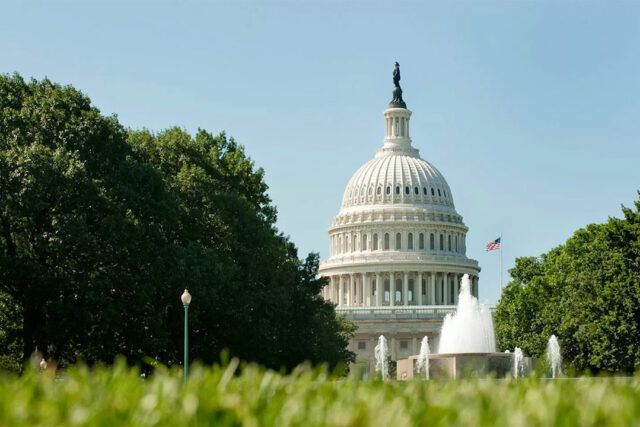US House passes $95-billion aid package for Ukraine, Israel
WASHINGTON — The US House of Representatives on Saturday with broad bipartisan support passed a $95-billion legislative package providing security assistance to Ukraine, Israel and Taiwan, over bitter objections from Republican hardliners.
The legislation now proceeds to the Democratic-majority Senate, which passed a similar measure more than two months ago. US leaders from Democratic President Joseph R. Biden, Jr. to top Senate Republican Mitch McConnell had been urging embattled Republican House Speaker Mike Johnson to bring it up for a vote.
The Senate is set to begin considering the House-passed bill on Tuesday, with some preliminary votes that afternoon. Final passage was expected sometime next week, which would clear the way for Mr. Biden to sign it into law.
The bills provide $60.84 billion to address the conflict in Ukraine, including $23 billion to replenish US weapons, stocks and facilities; $26 billion for Israel, including $9.1 billion for humanitarian needs, and $8.12 billion for the Indo-Pacific, including Taiwan.
Ukrainian President Volodymyr Zelensky expressed his thanks, saying US lawmakers moved to keep “history on the right track.”
“The vital US aid bill passed today by the House will keep the war from expanding, save thousands and thousands of lives, and help both of our nations to become stronger,” Mr. Zelensky said on X.
The Biden administration is already finalizing its next assistance package for Ukraine so it can announce the new tranche of aid soon after the bill becomes law in order to meet Ukraine’s urgent battlefield needs, a White House official said.
It was unclear how quickly the new military funding for Ukraine will be depleted, likely causing calls for further action by Congress.
Mr. Biden, who had urged Congress since last year to approve the additional aid to Ukraine, said in a statement: “It comes at a moment of grave urgency, with Israel facing unprecedented attacks from Iran and Ukraine under continued bombardment from Russia.”
The vote on passage of the Ukraine funding was 311-112. Significantly, 112 Republicans opposed the legislation, with only 101 in support.
“Mike Johnson is a lame duck … he’s done,” far-right Republican Representative Marjorie Taylor Greene told reporters afterward.
She has been a leading opponent of helping Ukraine in its war against Russia and has taken steps that threaten to remove Mr. Johnson from office over this issue. Ms. Greene stopped short of doing so on Saturday, however.
During the vote, several lawmakers waved small Ukrainian flags as it became clear that element of the package was headed to passage. Mr. Johnson warned lawmakers that was a “violation of decorum.”
Meanwhile, the House’s actions during a rare Saturday session put on display some cracks in what generally is solid support for Israel within Congress. Recent months have seen progressive Democrats express anger with Israel’s government and its conduct of the war in Gaza.
Saturday’s vote, in which the Israel aid was passed 366-58, had 37 Democrats and 21 Republicans in opposition.
Passage of the long-awaited legislation was closely watched by US defense contractors, who could be in line for huge contracts to supply equipment for Ukraine and other US partners.
Mr. Johnson this week chose to ignore ouster threats by hardline members of his fractious 218-213 majority and push forward the measure that includes Ukraine funding as it struggles to fight off a two-year Russian invasion.
The unusual four-bill package also includes a measure that includes a threat to ban the Chinese-owned social media app TikTok and the potential transfer of seized Russian assets to Ukraine.
Some hardline Republicans voicing strong opposition to further Ukraine aid argued the United States can ill afford it given its rising $34-trillion national debt. They have repeatedly raised the threat of ousting Mr. Johnson, who became speaker in October after his predecessor, Kevin McCarthy, was ousted by party hardliners.
“It’s not the perfect legislation, it’s not the legislation that we would write if Republicans were in charge of both the House, the Senate, and the White House,” Johnson told reporters on Friday. “This is the best possible product that we can get under these circumstances to take care of these really important obligations.”
Representative Bob Good, chair of the hardline House Freedom Caucus, told reporters on Friday that the bills represent a “slide down into the abyss of greater fiscal crisis and America-last policies that reflect Mr. Biden and (Democratic Senate Majority Leader Chuck) Schumer and (House Democratic leader Hakeem) Jeffries, and don’t reflect the American people.”
But Republican presidential candidate Donald Trump, who carries huge influence in the party, on April 12 voiced support for Mr. Johnson and in a Thursday social media post said Ukraine’s survival is important for the US — Reuters













